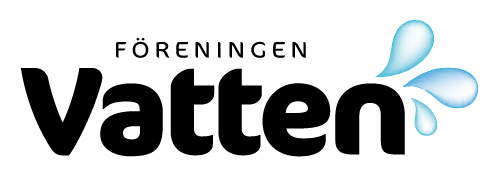CONSTRAINTS ON SUCCESSFUL IMPLEMENTATION OF THE EU WATER FRAMEWORK DIRECTIVE: A CASE STUDY – LAKE BRUNNSJÖN IN CENTRAL SWEDEN / Hinder att nå framgång med EU:s ramdirektiv för vatten: En fallstudie – Brunnsjön i Mellansverige
A pilot study of local initiatives for a river basin in accordance with the European Water Framework Directive is being carried out in central Sweden. The catchment recipient suffers from eutrophication and Cyanobacteria-charged turbid water. Stakeholder involvement and several measures are proposed to enable the lake to attain a good chemical and ecological status. To […]
GAOBEIDIAN TRAINING CENTER – EN ORGANISATION FÖR UTBILDNING AV DRIFTSPERSONAL VID RENINGSVERK I KINA / Gaobeidian Training Center – an organisation for training of personnel at wastewater treatment plants in China
Only about 6% of the urban population in China is connected to wastewater treatment plants. However, an ambitious plan for increasing this figure exists. A large portion of the existing treatment plants operates at a non-satisfactory efficiency and the reason is inadequate management and lack of operation knowledge and experiences. With a fast increasing number […]
NITRIFIKATIONSHÄMNING I KOMMUNALA AVLOPPSVATTEN – SKILLNADER OCH LIKHETER MELLAN DANMARK OCH SVERIGE / Inhibition of Nitrification in Municipal Wastewater- Differences and Similarities Between Denmark and Sweden
A Danish and a Swedish study of nitrification inhibition are compared. A considerably larger percentage of’ the Danish treatment plants received wastewaters strongly inhibitory to nitrification compared to the Swedish treatment plants. More than 20 % inhibition in a 50% dilution of the samples was noted for about a fourth of the investigated Danish wastewaters. […]
REMOVAL OF METAL IONS FROM LEACHATE
Waste deposits generate polluted water, leachate, which contains metal ions. Leachate is often led to waste water purifying plants. The metals sediment and end up in the digested sludge, which often is taken back to the waste deposit. This results in a negative eco-cycle. Metal ions in solution can be captured by ion-exchangers, but commercially […]
GIARDIA AND CRYPTOSPORIDIUM IN SWEDISH WASTEWATER TREATMENT PLANTS / Giardia och Cryptosporidium i svenska avloppsreningsverk
The occurrence of Giardia and Cryptosporidium in Swedish Wastewater treatment Plants (WWTP) has previously not been investigated. Giardia cysts were present in the untreated wastewater at every sampling occasion at all test sites in densities between 24—160 cysts/L, but only twice in the treated wastewater and in lower densities. Cryptosporidium oocysts were detected in 67 […]
EDTA-REDUKTION I EN MULTIBIOANLÄGGNING / EDTA-Reduction in a Multibio Plant
A pilot plant study with biological treatment has been carried out at Mörrum Bruk. The pilot plant was built as the future external treatment plant, a multistage biology or a so-called Multibio. The total retention time in the biological stages was slightly more than 7 hours. The volume load was about 5,5 kg COD/m3 d. […]
ALTERNATIVA ÅTGÄRDER FÖR MINSKAT INLÄCKAGE AV GRUNDVATTEN I AVLOPPSSYSTEM – PROGNOSTISERING AV EFFEKTER MED STÖD AV INTEGRERAD MODELLERING / Alternative Schemes for Reduction of Groundwater Inflow/Infiltration to Sewer Systems – Prediction of Effects with the Aid of Integrated Sewer/Aquifer Modelling
Sewer systems influence the local urban hydrology rhrough infiltration ofgroundwarer. Experiences indicate a limited use of traditional countermeasures for limiting the inflow/infiltration. Implementing alternative schemes introduces on the other hand many new technical issues. The answers to these demand a thorough geohydrological understanding of the catchment. The ability to describe this complex interaction and to […]
SLAMFÖRBRÄNNING OCH – ÅTERVINNING I JAPAN / Sludge Incineration and Reuse in Japan
Sludge incineration has been used in Japan for the last 30 years, as a method to reduce the sludge volume and to destroy organic pollutants. Today, incineration is conducted mainly in conventional fluid bed incinerators, however there is a shift towards the use of circulating fluid bed incinerators instead. The occurrence of dioxins is very […]
NATURVÅRDSVERKETS VATTENPROJEKT – ATT FÖRBEREDA OSS INFÖR ETT VATTENARBETE MED RAMDIREKTIVET FÖR VATTEN / The Water Project at Swedish EPA – getting ready for the EU Water Framework Directive
In VATTEN issue number 2, 1999, there was an article about the, at the time, newly started Water Project at the Swedish Environmental Protection Agency. That project, which was completed after two years, had as its overall objective to prepare Sweden for the new EU Water Framework Directive. The present paper describes the review of […]
KEMIKALIEBEHOV VID FOSFORUTVINNING UR AVLOPPSSLAM / Chemical Needs in Phosphorus Recovery from Sewage Sludge
A study concerning recovery of phosphorus from sludges and ashes has been performed as a cooperation project between Stockholm Water Co and the division of Water Resources Engineering at The Royal Institute of Technology. A model for calculation of the chemical demands for recovery of phosphorus using the commercial systems KREPRO, Cambi/KREPRO and BioCon has […]
